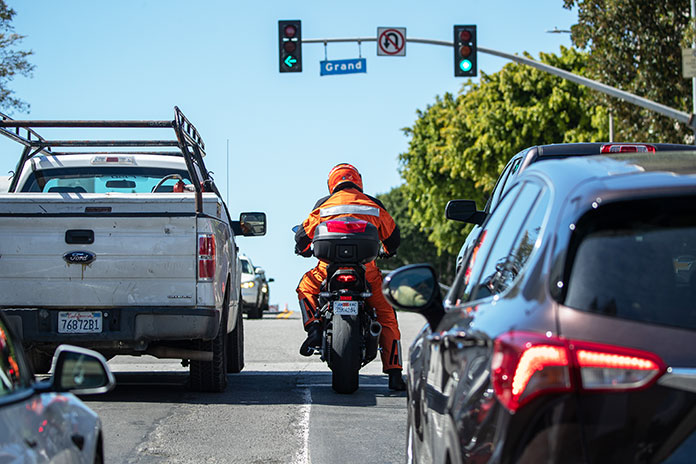Starting Tuesday, a new law in Minnesota will allow motorcyclists to split and filter lanes in certain traffic situations. This follows legislation passed in May 2024, making Minnesota one of the few states to permit this kind of motorcycle maneuvering.
What the New Law Allows
Lane splitting is now allowed when there are two or more lanes moving in the same direction. In this situation, motorcyclists can ride between lanes of traffic, but only at speeds up to 25 miles per hour.
Lane filtering, on the other hand, is permitted when traffic is stopped. In these cases, riders can move between lanes at speeds no more than 15 mph faster than the surrounding traffic.
These rules aim to ease traffic congestion and improve safety for riders. But there are restrictions. Motorcyclists cannot lane split in roundabouts, on freeway or expressway ramps with two lanes, or in school zones. Violating these rules could result in penalties.
Public Awareness and Safety Concerns
The Minnesota Department of Public Safety (DPS) has been educating the public about the new law since the summer of 2023. Still, officials say there will be a learning curve for both drivers and riders.
“Everybody needs to be patient,” said Jay Bock from DPS. “This is new, and not every motorcyclist will choose to lane split. Some will still prefer to ride in their own lane.”
Motorcyclist Travis Bretzman supports the law, saying it could actually improve safety. He explained that lane splitting and filtering could make riders more visible and help them avoid dangerous situations like being rear-ended.
“We often see drivers drift into our lanes or stare at their phones,” Bretzman said. “All we ask is that drivers stay off their phones and pay attention. A text message isn’t worth someone’s life.”
Bretzman also shared a personal story about his sister, who was seriously injured in a motorcycle crash in Arizona. She was hit from behind at a red light by a driver who wasn’t paying attention.
“She got run over, but what saved her life was that she landed on top of the bike and slid with it,” he said. “If filtering had been allowed, she might have moved out of harm’s way.”
More Than Just Minnesota
Minnesota is joining a growing list of states that allow lane splitting or filtering. Other states with similar laws include California, Utah, Colorado, Montana, and Arizona. However, Bock cautioned that while these laws might look alike, every state is different.
“This isn’t a one-size-fits-all policy,” he said. “What works in California might not be exactly right for Minnesota. We need to see how this goes and adjust if necessary.”
Final Thoughts
With the new law now in place, DPS is urging everyone—motorists and motorcyclists alike—to remain alert and courteous on the road. For riders, that means knowing when and where they can split or filter lanes. For drivers, it means checking mirrors and blind spots more often and avoiding distractions.
As Bock summed it up, “Don’t ride the white line at 30 waiting for your spot. Follow the rules and merge back into a lane when you hit 25 mph.”
With more visibility and safer options, the new law has the potential to protect lives—if everyone does their part.


